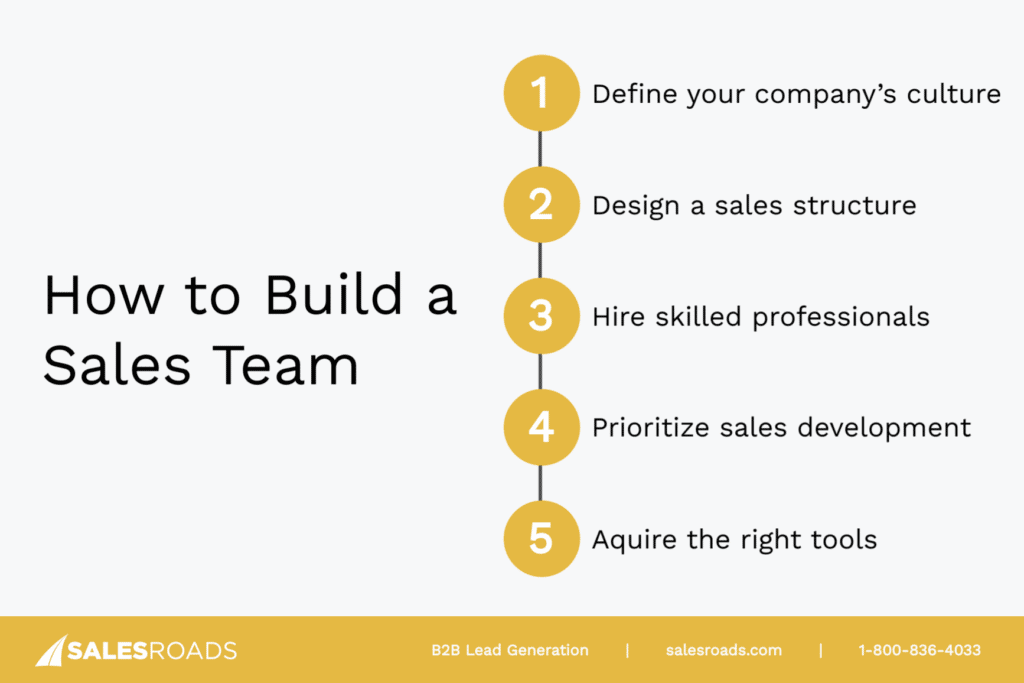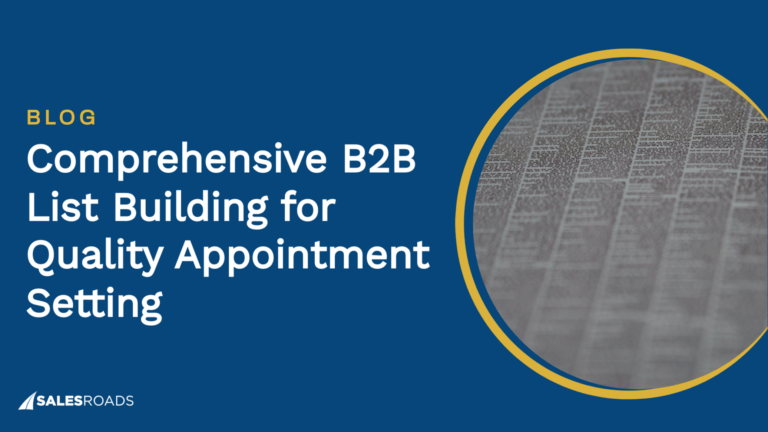Inside sales teams consist of sales development representatives (SDRs) and business development representatives (BDRs) who reach out to potential clients through calls, email, and other online channels.
While SDRs take charge of outbound prospecting, BDRs are responsible for inbound strategies and for passing qualified leads to account executives. The different stages of the inside sales process allow BDRs and SDRs to maintain an influx of leads into the funnel.
Many B2B, tech, and SaaS companies use inside sales as their preferred selling model due to the nature of their products and services. To succeed in this strategy, it is necessary to build a team of top professionals capable of delivering consistent, outstanding results.
Inside Sales vs Outside Sales
The major difference between both models is that inside sales reps sell remotely, often from an office, while outside reps visit clients at their premises, trade shows, and industry events. Companies can combine inside and outside sales to engage clients throughout the buyer journey without losing the valuable relationships that in-person conversations build.
Features of a High-performing Sales Team
As a sales leader, you should understand the attributes of outstanding teams to know what to prioritize when creating or improving your sales department.1
A high-performing sales team is characterized by:
- High win rates
- Continuous sales development
- Motivation
- Value
High win rates
High-performing sales teams close more deals. They accomplish this by working toward ambitious quotas and focusing on nurturing hot leads.
Continuous sales development
Managers of high-performing teams iterate and take actions to improve the sales process on a routine basis. To maintain good performance, they work on coaching tactics and provide training opportunities for SDRs.
Motivation
Sales leaders keep their teams motivated, which maintains high morale in the long run. Incentives such as bonuses, work breaks, and team bonding events encourage and prepare salespeople for outstanding results.
Value
Top sales teams emphasize product or service value in their conversations. SDRs identify each customer’s pain point and present the product or service as the most suitable solution for their needs.
Five Steps to Build a High-performing Sales Team
Sales leaders can use the following steps to build a sales team that produces exceptional results:

Define your company’s culture
Your company’s culture is a set of attitudes and values that influence your business operation. This should go beyond meeting sales quotas to emphasize employee job satisfaction, professional development, and remuneration.
A quality in-house culture prioritizes sales professionals that are:
- Passionate about customer experience;
- Ready to scale the company’s sales process;
- Dedicated to mentoring and assisting their colleagues;
- Focused on providing feedback for product and service improvement.
Design a sales structure
When your company’s sales process is standardized and replicable, it produces better results. Sales leaders must develop a repeatable step-by-step approach for converting leads into clients.
Prospecting, lead qualifying, product or service offering, objection management, closing, and after-sales support are elements of an ideal sales cycle. Sales leaders can use the company’s products to customize this process and develop a company-wide sales pipeline methodology.
Hire skilled professionals
Highly skilled salespeople make high-performing sales teams. The best leaders recognize these skills and recruit candidates who can apply them to achieve business success.
Mark Roberge, Hubspot’s former chief revenue officer, recommends hiring SDRs who are “coachable, inquisitive, passionate, intelligent, and have a strong work ethic.” You may use this to develop a consistent hiring formula that reliably attracts top talent to your organization.
Prioritize sales development
Sales leaders commit to ongoing professional development by creating a standardized onboarding process for new hires and training programs for employees. A robust orientation program shows new team members your corporate culture, internal processes, and methods to accelerate results.
Access to innovative sales modules and other training resources motivates your staff and increases efficiency. Managers can use periodic ‘learning days’ to deliver coaching and performance-based evaluations for salespeople.
Equip your team with the right tools
Once the sales process is in place and the team is full of competent individuals, you can provide automation solutions to enable high-quality results. These tools are must-have software for inside sales teams.
- Customer Relationship Management (CRM) software for tracking lead progress through the pipeline
- Videoconferencing tools
- Cloud storage platforms
- Calendar management and scheduling applications
- Team management tools for handling activities and quotas
Best Practices for Inside Sales Development
Sales managers maintain the outstanding culture of their inside sales teams by ensuring consistency in drive, motivation, and performance. You can employ these practices to improve your team’s results:
- Monitor key metrics
- Give feedback through excellent communication
- Reward success with compensation
- Implement sales enablement strategies
- Apply performance-based coaching
- Create a sales playbook
Monitor key metrics
Performance indicators reveal a team’s performance levels and spots areas for improvement. These metrics should be clear and visible to all team members.2
Some important inside sales KPIs to track are sales growth, sales targets, churn rate, win rate, conversion rate, profit margin, opportunity-to-close ratio, average deal size, and quota attainment.
Give feedback through excellent communication
Giving feedback is a crucial element of your job as a sales manager. Create a team environment where you can give and receive constructive feedback without tension.
High-performing sales teams have established methods for sharing critical information, which enables them to operate better as a team and achieve greater results.
Reward success with compensation
Sales leaders can build a compensation model that rewards effective salespeople and encourages them to improve individual results. Pay structures with quota bonuses, commissions, and other incentives push your team members to do more, yielding more revenue for the company.
Implement sales enablement strategies
Sales enablement is the strategic process of providing your team with training, tools, and resources to help them close more deals. This practice involves strategies that fine-tune sales reps’ skills, help managers support their reps, and monitor sales development.
Apply performance-based coaching
High-performing team managers are constantly looking for methods to improve their group’s performance-related skills. Areas to coach SDRs include prospecting, communication, outreach, time management, and objection handling.
Create a sales playbook
Creating a playbook to boost salespeople’s productivity is a crucial approach to achieving success. Sales leaders can harness their industry experience and product knowledge to provide a resource that assists SDRs to navigate through challenging scenarios.
Bottom Line
High-performing sales teams do not happen by chance. They are products of years of experience, proven techniques, and highly skilled professionals. It takes time to build a strong team, but the process of doing it and the outcomes are always beneficial.
Building an in-house team is not the only way to boost sales. If the costs exceed your budget, you can consider outsourcing your sales process to professional SDR teams to drive sales and grow your business.









